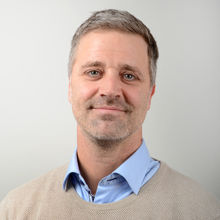Quick clay landslides can propagate very quickly backwards (retrogressively) over large areas, and the landslide debris can travel over considerable distances. With this, they pose significant risk to human lives, infrastructure, ecosystems and biodiversity. One of the most recent quick clay landslide events occurred on December 30th, 2020, in Gjerdrum, Norway, causing ten fatalities, evacuation of over 1600 residents, destruction of 31 houses, roads, utility lines, ecosystem downstream in the fragile ravine and agricultural land. Quick clay is found below the marine level , that is the present elevation of where the sea level was at end of the last ice age. Today, with about 75% of the Norwegian population living below the marine limit, and with growing societal needs, development on quick clay areas has become unavoidable. This poses a colossal challenge to authorities, spatial planners and stakeholders.
The management of quick clay areas, including spatial planning, maintenance, and design of risk reduction measures for societal security, often comes in conflict with local economy and environmental objectives. A sustainable and holistic approach calls for the development of a multi-sector solution balancing environmental, economic and safety objectives in quick clay areas. SAFERCLAY will prioritize challenges related to the protection of the cultural environment and nature in the context of climate change when building, living, and farming on quick clay areas.
SAFERCLAY team is a strong and multidisciplinary collaboration of four research organisations, key stakeholders, university, and industry in Norway, and two international partners.

Efforts for QC risk-reduction - Cloutier C et al. 2017. Development of a long-term monitoring network of sensitive clay slopes in Québec in the context of climate change. Landslides in Sensitive Clays

Annual frequency of large QCLs (volume > 50 000 m3)in Norway since 19701 - L’Heureux et al. 2018. Impact of climate change and human activity on quick clay landslide occurrence in Norway, Hong Kong



